
| Publisher: | Ecco | |
| Genre: | Short Stories (single author), Literary, Asian American, Fiction | |
| ISBN: | 9780063049901 | |
| Pub Date: | August 2021 | |
| Price: | $27.99 |
| Starred | Fiction |
by Anthony Veasna So
A cleverly wrought and sparkling debut story collection irrevocably tinged by grief, Anthony Veasna So's Afterparties is forever tied to its author's fate. So, on the precipice of literary fame, died of a drug overdose in 2020, before the release of this book. But Afterparties alone is a towering testament to the worlds inside So's own. At times numbingly sad, other times strikingly humorous, So's nine stories of Cambodian Americans in California's Central Valley are simultaneously a love letter, an indictment and a memoir. They lope between settings public and private--the counter of a donut shop, the aisles of a grocery store and the bed of a pair of queer lovers--and are each awash in the cognitive dissonance of the young immigrant experience. Each story is set against the Khmer Rouge genocide, which killed millions of Cambodians in the late 1970s, and traces how that trauma has infiltrated a new generation of American-born (or American-raised) youth. So himself was raised with this backdrop, and thus he is present in every chapter, a charismatic and emotionally charged hand pointing out each character to readers, allowing those characters to be turned over and examined.
This collection is so powerful and pungent because it seems hand-squeezed from reality. The description of smells and tastes and emotions are so carefully constructed that readers can practically taste the donut glaze on their fingertips as they turn the page. So was a talent--of that there can be no denial. And his presence is felt very much still, his complexities seeping onto every page of this soulful book. --Lauren Puckett, freelance writer
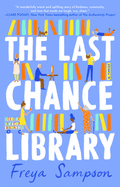
| Publisher: | Berkley | |
| Genre: | Women, Humorous, General, Romance, Contemporary, Fiction | |
| ISBN: | 9780593201381 | |
| Pub Date: | August 2021 | |
| Price: | $16 |
| Fiction |
by Freya Sampson
With The Last Chance Library, British author Freya Sampson delivers a refreshingly feel-good first novel about the sustaining power of books and how libraries unite communities and forge lasting relationships that improve lives.
The story orbits around a shy, small-town Brit, June Jones, 28 years old and suffering protracted grief after the death of her mother, who was the local librarian of Chalcot, a residential area. June is content continuing to live in the home she shared with her mother and working as an assistant librarian in the same library. There, June is privy to fascinating books and interacts with a host of quirky locals who depend on the library and all it has to offer. The patrons include two older ladies who are hang-abouts and gossips, one of whom constantly complains about noisy kids. A shy, bookish teenager relies on the respite of the library to escape her crowded family home. A mother and son who love to bake are constantly in search of new cookbooks. A precocious boy, the grandson of June's neighbor, frequents the library to nourish his overactive curiosity. And a retired, 82-year-old man shows up--always dapper in a suit and tie--to tackle the daily crossword puzzle.
When budget cuts in town threaten closure of the library, the patrons rebel and devise ways to save it. The Last Chance Library proceeds with great wit and tenderness. Readers will eagerly invest in the cause to save the library and be greatly amused by plot twists that play out with pleasant surprises and heart-tugging twists. -- Kathleen Gerard, blogger at Reading Between the Lines
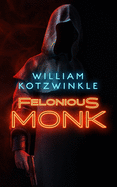
| Publisher: | Blackstone | |
| Genre: | Private Investigators, Humorous, Black Humor, Mystery & Detective, Crime, Suspense, Thrillers, Fiction, Action & Adventure | |
| ISBN: | 9781094009254 | |
| Pub Date: | August 2021 | |
| Price: | $26.99 |
| Mystery & Thriller |
by William Kotzwinkle
A monk inherits an uncle's estate and a $2 million debt to an organized crime ring in William Kotzwinkle's darkly funny crime thriller Felonious Monk.
Tommy Martini had a bright future, until he accidentally killed someone with a single punch. Luckily, his uncle with mob connections, Father Vittorio, stepped in to make a deal, whisking Tommy off to a Mexican monastery where the young man could show his contrition. The deal came with court-mandated medication to combat Tommy's anger. For five years, Tommy thrives as a monk, until he's summoned at age 26 to Vittorio's deathbed.
At Vittorio's estate in Paloma, Ariz., Tommy faces both culture shock and the rest of the criminally-minded Martini family. Everyone is shocked when Tommy inherits Vittorio's estate. Most of the family want him dead, but cousin Dominic throws away Tommy's meds and begs him to fight professionally. Tommy is about to give away his inheritance and return to the monastery when two thugs show up to collect $2 million Vittorio owed. No longer on medication, Tommy beats up the thugs and decides to forgo a life of peace until he eliminates his uncle's enemies.
Seasoned novelist William Kotzwinkle (Doctor Rat) tempers the blood-soaked brutality in Felonious Monk with tough-guy witticisms: "Rage is good.... It's part of evolution." "When you put someone in the ground your mood improves." "I don't kill all my men, Martini, just some of them." Kotzwinkle's writing draws readers into the righteous violence rather than push them away. --Paul Dinh-McCrillis, freelance reviewer
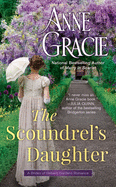
| Publisher: | Berkley | |
| Genre: | Historical - Regency, Romance, General, Fiction, Historical | |
| ISBN: | 9780593200544 | |
| Pub Date: | August 2021 | |
| Price: | $7.99 |
| Romance |
by Anne Gracie
Scoundrel's Daughter is a charming novel to launch the Brides of Bellaire Gardens series from acclaimed author Anne Gracie (Marry in Scandal), with an intriguing cast of characters sure to delight readers. Lady Alice Charlton has buried her abusive, obnoxious late husband and is happily looking forward to enjoying life as a single lady of moderate means. Her pleasant anticipation is shattered, however, when a scoundrel appears and threatens the public release of letters written by her late husband to his mistress. The sketchy stranger demands Alice introduce his daughter, Lucy, into society and guarantee the girl's marriage to a lord in return for the letters.
Dismayed, Alice reluctantly agrees but soon discovers Lucy has no interest in marrying a lord. Alice turns to her nephew, Gerald, for assistance in recovering the letters, and he approaches his ex-commander, Lord James Tarrant, for aid. Neither Alice, James, Lucy or Gerald have heretofore been interested in marriage. It isn't long, however, before James is mustering all the charm he possesses to entice the lovely Alice into seeing him as a potential husband. Gerald has a much more difficult prospect in Lucy, however, for she's a decidedly independent young woman who isn't inclined to see him in a favorable light.
This duel between determined male suitors and reluctant ladies is grounded with authentic emotional connections and a well-crafted plot. Paired with colorful secondary characters--which include three adorable little girls, a cat, one extremely annoying mother and several quirky gentlemen--the result is a thoroughly entertaining tale. Readers are in for a treat. --Lois Faye Dyer, writer and reviewer
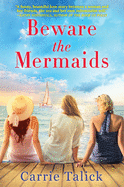
| Publisher: | Alcove Press | |
| Genre: | Women, Friendship, Family Life, General, Fiction | |
| ISBN: | 9781643858241 | |
| Pub Date: | August 2021 | |
| Price: | $16.99 |
| Romance |
by Carrie Talick
Carrie Talick's exciting first novel, Beware the Mermaids, opens with a scene that packs a wallop. Nancy Hadley, a native Californian who came from modest beginnings to become a wealthy housewife, lives in Hermosa Beach. Nancy--a lifelong sailor, thanks to a doting Finnish grandfather who instilled in her an instinct and love for the sea--cheerfully escorts a charity league on a tour of the Bucephalus, a 38-foot racing yacht owned by Nancy and her husband, Roger. As the group boards the well-appointed sailing vessel, Nancy catches scheming, philandering Roger in a compromising position with none other than Nancy's cunning, devious nemesis, a woman who hailed from the East Coast and clawed her way into "the upper echelons of society."
What follows is the start of an acrimonious divorce between Nancy and Roger. The Bucephalus, which both refuse to relinquish, becomes the obstacle in finalizing the legalities of their split. Locked in a grueling tug-of-war, determined Nancy gears up for a fight. She moves out of their lavish home, buys a boat of her own to live on and rallies the support of her tight-knit circle of girlfriends, intent on teaching them how to sail. When Nancy suggests that she and Roger, via competing vessels and crews, both enter the Border Dash Race, which sails from Newport Harbor to Ensenada, Mexico--winner take all--the stage is set for high-stakes fun and drama.
Fans of women's fiction will eagerly climb aboard Talik's smart, sassy, suspenseful story that sails through choppy waters and shifting tides of betrayal, friendship and new romance. --Kathleen Gerard, blogger at Reading Between the Lines
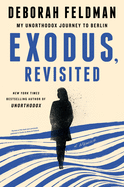
| Publisher: | Plume | |
| Genre: | Biography & Autobiography, Personal Memoirs, Religion, Psychology of Religion, Jewish | |
| ISBN: | 9780593185261 | |
| Pub Date: | August 2021 | |
| Price: | $18 |
| Starred | Biography & Memoir |
by Deborah Feldman
In her third memoir, Exodus, Revisited: My Unorthodox Journey to Berlin, Deborah Feldman--whose first book, Unorthodox, was the basis for the Netflix series of the same name--expands upon her 2014 book, Exodus. Her resolve and unwavering quest to fill the space left when she fled her repressive Hasidic community are impressive. "The needle of my inner compass quivered without pause in its search for something, the nature of which I would not be able to pinpoint for some time."
She demonstrates her commitment as well as her anxiety, and those new to Feldman's story will catch up easily. This book begins after she leaves her marriage and Brooklyn with her son, but she references life in the insular society, particularly memories of her beloved grandmother, a Holocaust survivor "by a hairsbreadth." Few will share Feldman's roots, but the obstacles in her path are familiar: single motherhood, a drawn-out divorce, economic insecurity. Attracted to Europe, her ancestral home yet the site of "the apocalypse that had nearly wiped us out," she visited historic Jewish sites including "Bubby's" Hungary; she witnessed antisemitism yet committed to relocating. In an inspiring leap, Feldman is able to "push past the superficial levels" of her fear, settling with her son in cosmopolitan, literary Berlin in 2014, starting over "twice in one decade."
Near the book's end she confides to readers, "So you can imagine my shock when I received that fateful phone call, the one I warned you about at the very beginning of this story" that reveals the hidden link in her genealogy. Satisfied at last, she writes, "there is really no greater triumph in my life than that of having found my way home." --Cheryl McKeon, Book House of Stuyvesant Plaza, Albany, N.Y.
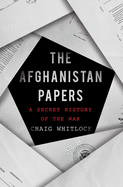
| Publisher: | Simon & Schuster | |
| Genre: | Middle Eastern, Corruption & Misconduct, Asia, Afghan War (2001-), General, History, World, Military, Political Science | |
| ISBN: | 9781982159009 | |
| Pub Date: | August 2021 | |
| Price: | $30 |
| History |
by Craig Whitlock, The Washington Post
This bombshell report by Craig Whitlock and the Washington Post reveals the mendacity of U.S. civilian and military leaders spanning the past three presidential administrations. Whitlock, a three-time Pulitzer Prize finalist and Post investigative reporter, plumbs the murky depths of the U.S.'s longest and costliest war, uncovering the government's sustained effort to mislead the American people on the war in Afghanistan. Based on more than 1,000 interviews and 10,000 documents--many of which were obtained from two Freedom of Information Act lawsuits the Post filed against the federal government--the book is a damning account of "what went wrong and how three consecutive presidents and their administrations failed to tell the truth."
After achieving a clear-cut goal of destroying al-Qaeda in Afghanistan post-9/11, the U.S. fell victim to mission creep and the absence of an overall strategy, which haunted three diverse administrations all loathe to admit defeat in the "graveyard of empires." The mountain of interviews and quotes from those directly involved--senior officials, generals, soldiers, aid workers and Afghani allies--form the bulk of Whitlock's report and serve as a necessary truth tonic to the toxic evasions and lies of the Bush, Obama and Trump administrations, which Whitlock details extensively. In the words of one top diplomat under President Bush, "we did not know what we were doing." It is a refrain throughout much of the book, and readers will be astonished by the starkly contrasting nature of these revelations, set against the glib dishonesty of senior U.S. officials predicting "victory on the horizon." --Peggy Kurkowski, book reviewer and copywriter in Denver

| Publisher: | Penguin Books | |
| Genre: | Mystery & Detective, Amateur Sleuth, Fiction | |
| ISBN: | 9781984880987 | |
| Pub Date: | August 2021 | |
| Price: | $17 |
| Now in Paperback |
by Richard Osman
With The Thursday Murder Club, British TV personality Richard Osman (The World Cup of Everything) has crafted a very funny cozy mystery set in an upscale assisted living community in bucolic Kent, England.
In the luxury facility, four elderly residents--each retired, sharp and energetic--meet once a week in the Jigsaw Room, where they covertly gather to crack actual cold case murders. The group was founded by resident Elizabeth, a shrewd and devious former spy, and Penny, a retired police detective inspector who provided the cases to solve. With Penny now in a coma, however, Elizabeth keeps the club in session, continuing to work cold cases with other fellow residents and mystery aficionados. They include dapper Ibrahim, a psychiatrist; brassy, tattooed Ron, a former trade union official; and unassuming Joyce, a nurse whose interspersed diary commentaries enlighten readers to the often zany inner workings of the club.
When a real-life murder happens at the facility--the bludgeoning of the builder who constructed the retirement community--the club and its members employ their offbeat skills and talents to root out the killer. They skillfully manipulate the help of a 26-year-old female police constable--an ambitious transplant from London--and her Detective Chief Inspector boss, who follow a host of leads and red herrings.
Osman's suspenseful, complex and deeply entertaining storytelling--along with rich characterizations depicting the quirky absurdities and power of pensioners--transforms darker themes of murder and crime-solving into smart, clever fun. --Kathleen Gerard, blogger at Reading Between the Lines
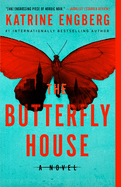
| Publisher: | Gallery/Scout Press | |
| Genre: | Mystery & Detective, Crime, International Crime & Mystery, Literary, Fiction | |
| ISBN: | 9781982127619 | |
| Pub Date: | August 2021 | |
| Price: | $16.99 |
| Now in Paperback |
by Katrine Engberg
Fans of The Tenant, the first of Katrine Engberg's Kørner and Werner books, will cheer the publication of its finely wrought follow-up, The Butterfly House. However, it's not quite accurate to report that the Copenhagen Police's odd-couple detectives are, as the saying goes, together again. As The Butterfly House opens, Detective Anette Werner is holed up at home, having just had a baby. Not that this stops her from doing what her more rule-abiding partner, Jeppe Kørner, dubs "rogue maternity-leave sleuthing": when Werner learns of a new case from the police radio she has neglected to return to headquarters, she's off and running.
Early one October morning, a corpse is found in Caritas Fountain, in Copenhagen's Old Market Square. Before she was dumped there, the victim--a middle-aged health-care aide--was cut and left to bleed to death. When another body is discovered in a different fountain the following day, it's determined that the victims have more in common than just their killer.
Engberg nimbly integrates two subplots into her main story, which leans on psychological analysis without being ponderous about it. Like The Tenant, The Butterfly House makes terrific use of its setting's cultural institutions and social mores. (Kørner remarks, upon viewing footage of the killer's means of transporting the bodies: "A murderer on a cargo bike, only in Denmark!") The novel's roaming perspective has a thrillingly nerve-racking effect: each time the viewpoint shifts, readers can't help but wonder if this is the character who's going to get it--or give it. --Nell Beram, author and freelance writer
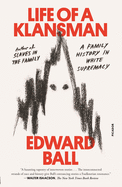
| Publisher: | Picador | |
| Genre: | Biography & Autobiography, Discrimination, United States, 19th Century, Personal Memoirs, State & Local - South (AL,AR,FL,GA,KY,LA,MS,NC,SC,TN,VA,WV), History, Social Science | |
| ISBN: | 9781250798619 | |
| Pub Date: | August 2021 | |
| Price: | $20 |
| Now in Paperback |
by Edward Ball
In 1998, Edward Ball won the National Book Award for Slaves in the Family, his unflinching history concerning slavery his father's ancestors perpetuated in South Carolina. He continues unraveling the tightly knotted legacy of white supremacy by studying his mother's ancestors in Louisiana: specifically, Polycarp Constant Lecorgne, "our klansman."
A fighter in the rebel army during the Civil War and in the white militias of Reconstruction, Constant is but a focal point in Ball's broader concern, bringing clarity to the corrosive ideologies of slavery and race science, whose fallout continues to revisit generation after generation of Americans. "I am trying to make this thing visible," he writes, "whiteness. It looks transparent and flimsy, maybe. Some would say it does not even exist. But I am trying to make it conspicuous, as visible and as plain as blackness." Spanning most of the 19th century, Life of a Klansman is a nuanced case study of one cog within a machine of terrorism and oppression.
Ball creates a dynamic space for challenging reconciliation, breaking from the narrative periodically to reflect with empathy for family members acting in ways he abhors, yet never absolving them. In documenting white violence, Ball writes, "Here is a way not to see these events: the marauders like Constant are immoral, abject, and bad people.... It is truer to say this. The marauders are our people, and they fight for us." Never does the author lose sight of his complicit inheritance of privilege at the expense of Black lives.
A 2020 NPR Staff Pick, Life of a Klansman removes the histrionic hoods and gazes purposefully into the frantic eyes of a homegrown terrorism. --Dave Wheeler, associate editor, Shelf Awareness

| Publisher: | Knopf Books for Young Readers | |
| Genre: | Runaways, Family, Literary, Social Themes, Young Adult Fiction, Siblings | |
| ISBN: | 9780525580997 | |
| Pub Date: | August 2021 | |
| Price: | $18.99 |
| Starred | Children's & Young Adult |
by David Levithan, Jennifer Niven
The captivating Take Me with You When You Go deftly relates the difficult but ultimately uplifting story of a brother and sister who, although they don't have parents they can count on, do have each other--even when one of them unexpectedly runs off.
One morning, 15-year-old Ezra Ahern wakes up to find his sister, Beatrix, gone. She's made her bed ("an exquisite f*** you" to her mom and stepdad) and taken off with money Ezra hid in his room. She's left behind everything else, including Ezra, who must now singlehandedly deal with the rage and abuse from their mom and stepdad. But 18-year-old Bea felt she had to leave; even with high school graduation only two months away, the constant worrying about whether she's "smart enough, brave enough, nice enough, pretty enough, funny enough, enough-enough" became too much. Except now she's alone on the streets, messaging a Mystery Guy and pinning all her hopes on him for the new life she wants so badly.
Levithan (Every Day; The Mysterious Disappearance of Aidan S.) and Niven (All the Bright Places; Holding Up the Universe) have written a compelling, contemporary portrait of a brother and sister who rely on their love for each other to survive. The novel, told entirely through e-mails between Ezra and Bea, suspensefully and urgently delves into the nuances of parental abuse and the toll it takes on its victims. This novel about a supremely troubled family still somehow manages to remain almost unfailingly optimistic, as the two siblings never stop fighting for each other and for the life they truly deserve. --Lynn Becker, reviewer, blogger, and children's book author
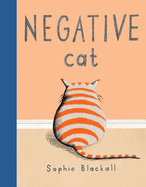
| Publisher: | Nancy Paulsen Books | |
| Genre: | Cats, Animals, Humorous Stories, Social Themes, New Experience, Juvenile Fiction | |
| ISBN: | 9780399257193 | |
| Pub Date: | August 2021 | |
| Price: | $17.99 |
| Children's & Young Adult |
by Sophie Blackall
A couple of classic children's book premises--a kid wants a pet, and a kid has a learning challenge--are brought together in Negative Cat, Sophie Blackall's winsome picture book salute to pets, perseverance and ideas so crazy they just might work.
As the story begins, the narrator's browbeaten parents finally give in to his pestering for a cat--with certain conditions. The most daunting? He must read for 20 minutes each day. Unfortunately, the cat that the boy chooses at the rescue shelter isn't scoring points at his new home: among other problems, "Max leaves hairballs on the rug, his tail in the butter, and poop in the vestibule." Meanwhile, the narrator hasn't kept up with his reading, so his mom phones the shelter lady, who comes over to reclaim Max. In desperation, the boy grabs a book: "I begin to read slowly. Out loud. The only way I know how." The boy's voice lures Max out from under the bed, and--what's this?--he ambles over for a cuddle. This gives the shelter lady an idea....
Inspired by a phenomenon observed at the Animal Rescue League of Berks County, Pa., Negative Cat is so ceaselessly entertaining that readers may not pick up on its underlying educational mission. Caldecott medalist (for Finding Winnie and Hello Lighthouse) Blackall accents her meticulously coy art with dialogue balloons containing the narrator's relatives' remarks ("He doesn't even purr," and so on), which collectively form their own hilarious Greek chorus of negativity. --Nell Beram, freelance writer and YA author